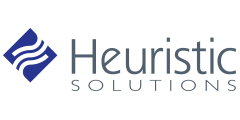All certification management tools must be tailored to the “three E’s” of eligibility: education, experience, and exams. Of course, each industry and profession has a different way of looking at how these factors relate and are weighted.
Eligibility Paths and the Challenge for Certification Management Tools
As programs consider what will prepare a person to pass the exam, they often will consider different combinations of education and work experience. For example, an associate’s degree combined with more years in the workforce, a related bachelor’s degree combined with some work experience, and a master’s degree combined with the least amount of work experience. We call these combinations “eligibility paths.”
That’s why neither a “one-size-fits-all” solution nor a painstakingly custom-coded system is an ideal certification management tool: The former can typically only support simple application processes with one eligibility path, and the latter will struggle to manage multiple eligibility paths.
Here are some reasons why each of a program’s “three E’s” can lead to increased complexity of eligibility rules:
Education
Most professional certification organizations recognize that education is the primary means for a practitioner to attain a base level of knowledge in the domain. Typically, applicants demonstrate that education by earning a college degree in a specific field.
These organizations also increasingly recognize that educational goals are being met on longer timelines, often in a more nonlinear format that includes transfers, breaks between coursework, and supplemental courses of study. In response, many have broadened their education requirements to accommodate a greater variety of educational backgrounds, especially in the context of extra-academic work. Which brings us to our next eligibility factor:
Experience
In addition to education, many programs recognize and require the valuable domain knowledge gained through work experience. However, what constitutes professional or hands-on experience and how that experience is evaluated may differ widely from organization to organization and credential to credential.
Especially in high-stakes professions that safeguard public trust and safety, credentialing bodies may require evidence demonstrating practice under specific supervision. Applicants may need to submit clinical logs or employer references.
Exams
For most organizations, the core eligibility requirement is passing the exam, and all eligibility paths lead to it. Regardless of how flexible traditional certifications may be on education and experience, a passing score on the exam is non-negotiable.
It takes extensive resources to develop an exam that reflects the full spectrum of KSAs required for consideration as qualified within the profession. For the certification to “have value,” not everyone should be able to pass the exam. Broad job task analyses, in-depth item writing for test development, and professional scoring psychometrics are all part of a necessary investment in that value. Some certifications may require multiple shorter exams to be administered over time or even different kinds of exams (i.e., traditional vs. practical). Usually, the higher the stakes, the more lengthy and difficult the exam.
A Note on the Fourth E: Ethics
Many professions are responsible for upholding the public trust and thus have established rigorous standards of conduct. Certification within these professions often means that not only is someone qualified to perform services in this professional domain, but they will also act ethically by upholding those professional standards.
The “ethics” requirement has recently come under more intense scrutiny as a fourth “E” for eligibility. Many of these codes of conduct prevent candidates with criminal backgrounds from applying for a credential, even when the violation is not directly related to the domain of that credential. Given that 29.5% of the US population has a criminal background (source: PolitiFact), many organizations are considering the balance of upholding their standards of conduct without unduly excluding otherwise qualified practitioners.
A Safe Amount of Flexibility: Expanding Eligibility Pathways
Recognizing that individuals might approach earning credentials from many different directions and starting points, many organizations are developing additional tracks to certification and licensure. Some applicants may have more education and some more experience. Some might have unconventional backgrounds in different areas of work or study. This diversity can have a positive impact on the quality of professional practice.
For credentialing bodies to even imagine new possibilities for their programs, it’s crucial to have a system that isn’t static. Configurable certification management tools help organizations become more responsive to change by creating conditions conducive to making changes.
LearningBuilder Software Streamlines Certification Management Processes
Does your program struggle with managing the complexities of multiple eligibility paths? We built LearningBuilder from the ground up for credentialing organizations, and in our many implementations over the years, we’ve honed the ability to translate a program’s complex eligibility rules into a straightforward, streamlined applicant experience. We deliver highly customized solutions without the need for custom coding. We’re ready to learn the intricacies of your program — where it needs to be strict and where it needs to remain flexible — and use them to implement a user-friendly application process for both end users and organizational staff. Schedule a demo to learn more about the LearningBuilder application experience.




